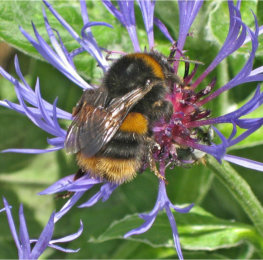 More than 66 hectares – or 163 football pitches – of lush wildflower habitat have been created in the South Downs National Park to help bees flourish.
More than 66 hectares – or 163 football pitches – of lush wildflower habitat have been created in the South Downs National Park to help bees flourish.
The National Park Bee Lines initiative continues to give a helping hand to struggling pollinator populations by creating wildflower havens at farms, community fields, recreation grounds, road verges, schools, and even cemeteries and golf clubs.
Early ecological data shows that the wildflower planting is helping bees and butterflies bounce back.
New planting effectively creates a “road system” for pollinating insects, allowing them to move through the landscape more easily.
Nick Heasman, a Countryside Policy Manager for the South Downs National Park who has been helping to lead Bee Lines, said: “It’s blooming marvellous that thanks to all the donations from the public we’ve been able to create these new havens for pollinators.
“Bees are busy ecosystem engineers and by pollinating flowers they create food for other wildlife and, of course, humans. In fact, one out of every three mouthfuls of our food depends on pollinators such as bees.
“Bee Lines is just one strand of the National Park’s ReNature campaign and it’s incredibly exciting to see nature recovery in action.”
We have without a doubt seen an enormous increase in biodiversity resulting from the new meadow where children have identified snails, mice, buzzard as well as many species of butterflies and bees. In addition to raising children's awareness of the importance of pollinating insects in the food chain, the wildflower meadow is also a wonderful source of peace, beauty and tranquillity.”